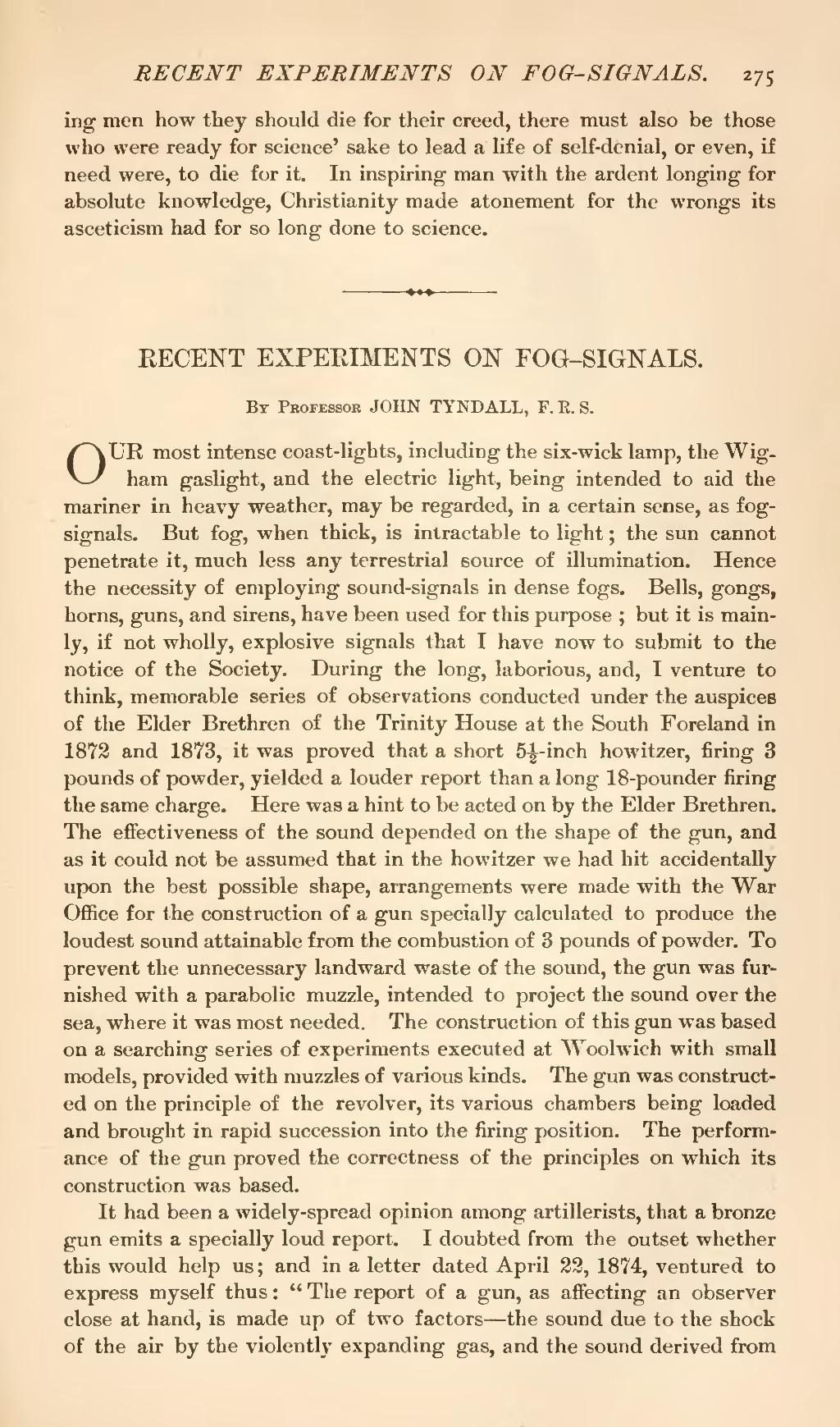ing men how they should die for their creed, there must also be those who were ready for science' sake to lead a life of self-denial, or even, if need were, to die for it. In inspiring man with the ardent longing for absolute knowledge, Christianity made atonement for the wrongs its asceticism had for so long done to science.
| RECENT EXPERIMENTS ON FOG-SIGNALS. |
By Professor JOHN TYNDALL, F. R. S.
OUR most intense coast-lights, including the six-wick lamp, the Wigham gaslight, and the electric light, being intended to aid the mariner in heavy weather, may be regarded, in a certain sense, as fog-signals. But fog, when thick, is intractable to light; the sun cannot penetrate it, much less any terrestrial source of illumination. Hence the necessity of employing sound-signals in dense fogs. Bells, gongs, horns, guns, and sirens, have been used for this purpose; but it is mainly, if not wholly, explosive signals that I have now to submit to the notice of the Society. During the long, laborious, and, I venture to think, memorable series of observations conducted under the auspices of the Elder Brethren of the Trinity House at the South Foreland in 1872 and 1873, it was proved that a short 512-inch howitzer, firing 3 pounds of powder, yielded a louder report than a long 18-pounder firing the same charge. Here was a hint to be acted on by the Elder Brethren. The effectiveness of the sound depended on the shape of the gun, and as it could not be assumed that in the howitzer we had hit accidentally upon the best possible shape, arrangements were made with the War Office for the construction of a gun specially calculated to produce the loudest sound attainable from the combustion of 3 pounds of powder. To prevent the unnecessary landward waste of the sound, the gun was furnished with a parabolic muzzle, intended to project the sound over the sea, where it was most needed. The construction of this gun was based on a searching series of experiments executed at Woolwich with small models, provided with muzzles of various kinds. The gun was constructed on the principle of the revolver, its various chambers being loaded and brought in rapid succession into the firing position. The performance of the gun proved the correctness of the principles on which its construction was based.
It had been a widely-spread opinion among artillerists, that a bronze gun emits a specially loud report. I doubted from the outset whether this would help us; and in a letter dated April 22, 1874, ventured to express myself thus: "The report of a gun, as affecting an observer close at hand, is made up of two factors—the sound due to the shock of the air by the violently expanding gas, and the sound derived from

